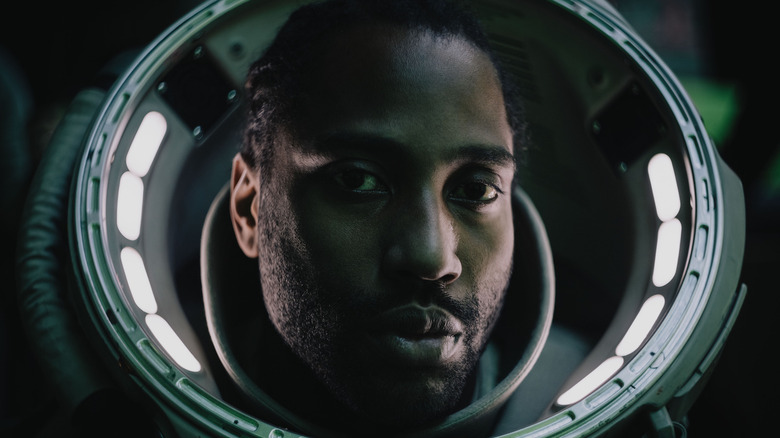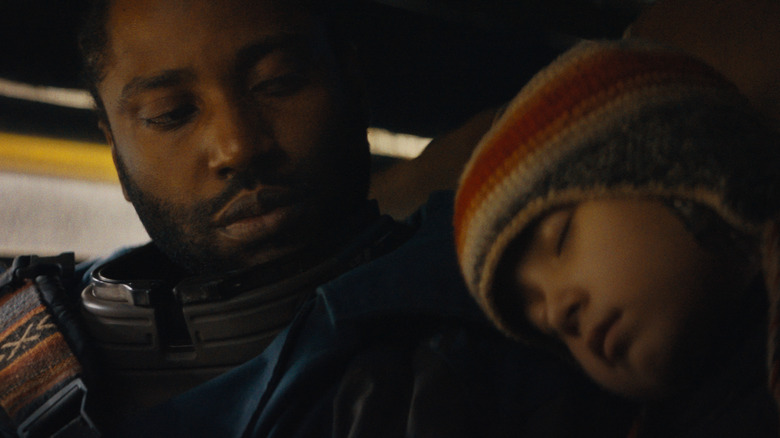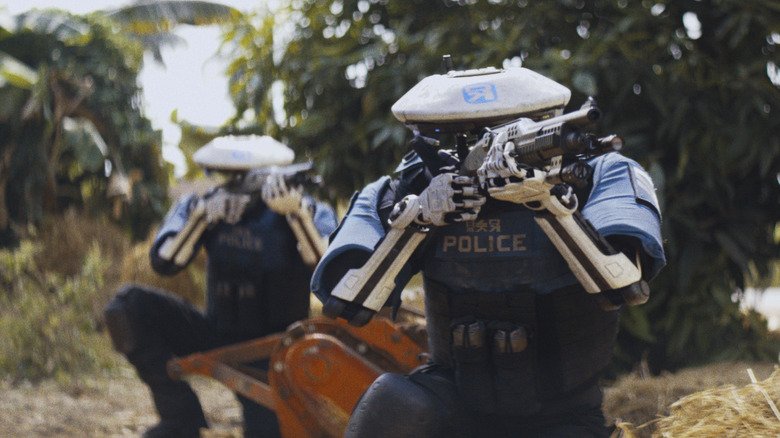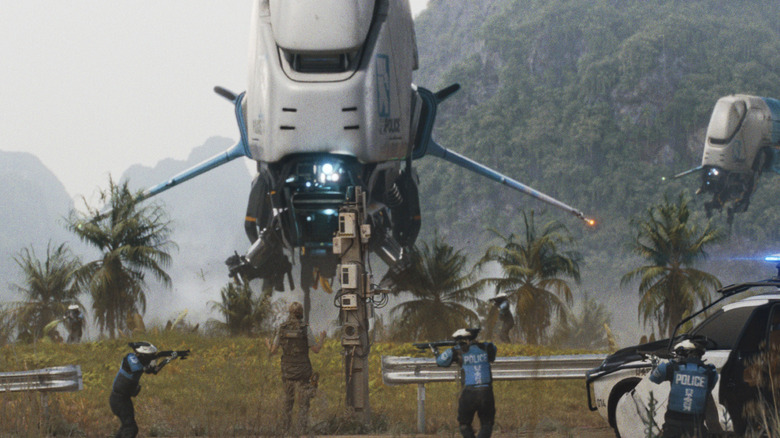The Creator Review: A Visually Stunning Yet Emotionally Stunted Sci-Fi Epic
Gareth Edwards entered the film scene with "Monsters," a fantastic sci-fi movie that used its limited budget to tell a thrilling, suspenseful story. After that, however, Edwards went the route of many an indie director in the 2010s and was tapped to direct two huge blockbuster franchises, "Godzilla" and "Rogue One: A Star Wars Story." While both had their merits ("Rogue One" even has some of the best moments in all of "Star Wars"), there is definitely something refreshing and exciting about Edwards finally overcoming his blockbuster fatigue and going back to his roots with "The Creator," a visually stunning piece of science fiction with big ideas and big performances.
In some ways, this is Gareth Edwards doing his version of "Star Wars: A New Hope" — a story of rebellion complete with a magical child, an evil battle station with a weapon that can completely obliterate planets, and a band of rebels led by an esteemed actor. There are thrilling action sequences, incredible sci-fi designs reminiscent of the work of Simon Stålenhag in "Tales from the Loop," a poignant tale of the U.S. invading other nations with weak excuses, and some of the coolest robots in recent movie memory.
The problem is that the script (by Edwards and Chris Weitz, who also worked on "Rogue One") never follows through on the deeper or more complex ideas it brings up, and overly simplifies its conflict and the people involved. This results in a predictable and dumbed-down story that feels like Edwards doing James Cameron's "Avatar" in terms of presenting bold worldbuilding and sci-fi ideas, but without the emotional resonance of that giant film. This is a very cool movie, but not necessarily a very good one.
A war for survival
The first thing to know about "The Creator" is that it manages to build a believable, visually astonishing sci-fi world. The film starts with newsreel footage telling the story of humanity's relationship with robots, and how A.I. was created to aid humans in doing manual labor. Then we became too dependent on them as they took over more and more jobs, including security and warfare. Then one day, they detonated a nuke in Los Angeles that killed a million people and kickstarted a war. A decade later, all A.I. is banned in the West, while Asian countries united to create New Asia, where A.I. is still thriving and living side by side with humanity.
While the world of "The Creator" and its visuals do much of the heavy lifting, it still features some powerful performances, particularly by John David Washington and newcomer Madeleine Yuna Voyles. The former plays Joshua, an American soldier tasked with finding "Nirmata," the titular creator whose role in the A.I. movement is kept too vague to know why it is important other than because we're told it is. But after the military gets trigger-happy, Joshua finds himself alone and without friends, as he struggles with whether he should kill Nirmata's newest weapon that could destroy mankind, which has the form of a young girl named Alfie (Voyles).
Like "Rogue One," "Monsters," or the original "Star Wars," Edwards' "The Creator" paints a picture of a world that feels lived-in and thought-out, where the look of every building, every piece of tech, and every background detail tells a story rich in history. A lot of what we know of the world of "The Creator" is told visually rather than through exposition, which is a welcome change of pace these days.
A world of possibilities
The VFX wizards at ILM and other studios, as well as cinematographers Greig Fraser and Oren Soffer, crafted one of the most gorgeous sci-fi movies of the past few years (at a much lower budget than most big sci-fi blockbusters), with intricate robot designs that look new and unique, ships that feel like they could exist in the real world in the future, and smoothly integrating all of this with the real sets.
Unfortunately, "The Creator" script simplifies things seemingly because it doesn't trust the audience. Take the conflict between humans and A.I. We know both sides think they're fighting for survival, but even if the movie does constantly show A.I. shooting humans, a character says they don't want to kill people, they just want to be left alone. This is an interesting idea that definitely differentiates both sides, but the film pulls back rather than explores that concept, turning the A.I. into this film's version of the Na'vi, a technologically backward faction fighting a military empire, rather than anything more substantial.
Simple, not universal
Indeed, any time "The Creator" introduces a complex thought or concept — like parallels between the Americans (and presumably the rest of the Western world, although we never see them) using excuses to invade foreign lands in search of supposed weapons — it pulls back without giving it much thought and returns to its simple "Rebels against an Empire" scenario. Then there's the portrayal of a Pan-Asian culture, which the script never gives much thought beyond "Southeast Asian landscapes with robots look cool."
Also, the specific choice of calling the new super country New Asia but mostly only showing Southeast Asia locations, and particularly the way "The Creator" uses Japanese kanji throughout its runtime but features no Japanese people other than Ken Watanabe, is a baffling choice, particularly with the story of American warfare in Asia.
James Cameron's "Avatar" is often criticized for its derivative story, but it works because its simplicity makes it universal. "The Creator" forgets that second part and just goes for simple and derivative. Still, watching Edwards pull his "A New Hope" is entertaining, and proof that we can still have stunning-looking works of original sci-fi.
/Film Rating: 7 out of 10



